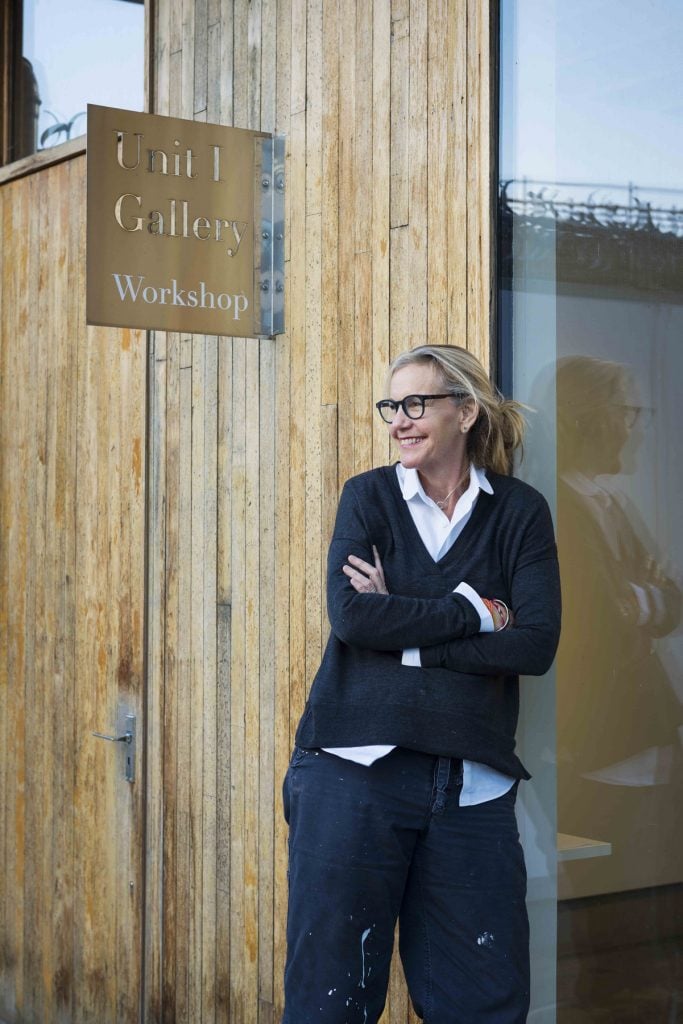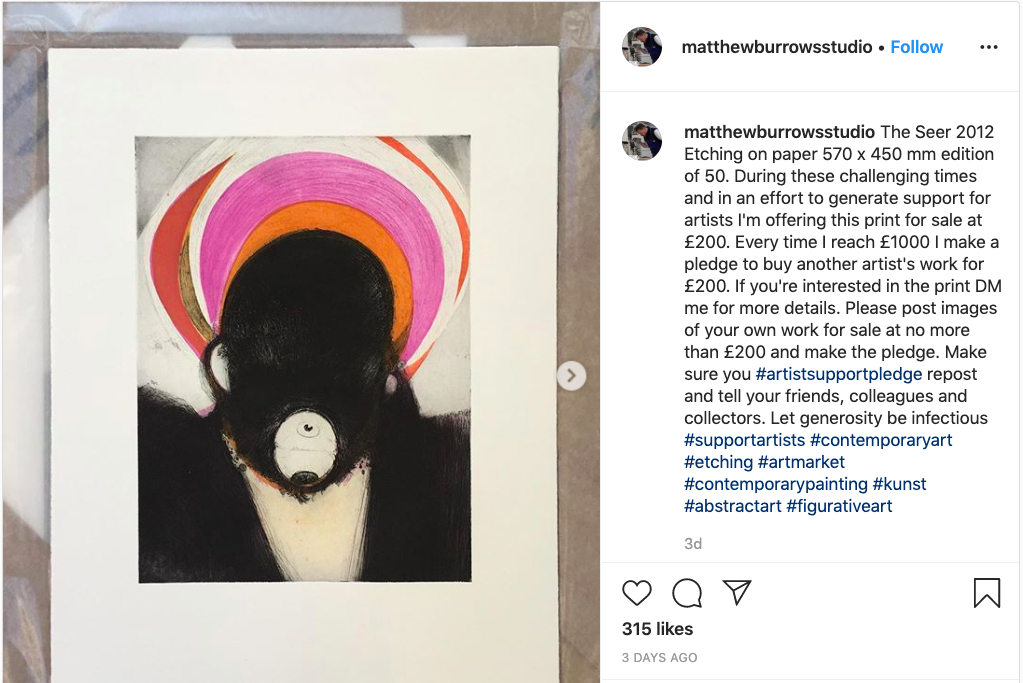Op-Ed
Selling Art on Commission Is Unfair to Artists. Here’s Why a Direct-to-Consumer Approach Is the Future of the Art Market
Artist and nonprofit gallery founder Stacie McCormick makes the case for alternative sales models.

Artist and nonprofit gallery founder Stacie McCormick makes the case for alternative sales models.

The excitement, nurture and structure of my Masters program in the arts was brilliant. Yet, like many artists, upon graduation I was set adrift and left ill-prepared to make a living from the work I had dedicated years to producing. Within six months of graduating I had my own solo exhibition with a commercial gallery, but it was a cruel awakening to be faced with the 60/40 split of sales, despite covering 100 percent of the production costs myself.
I understood the gallery’s role and strength, but it felt imbalanced, and this feeling grew. I was puzzled by the metric and thought: Surely there is a fairer way?
Fresh off the Basel-Frieze-FIAC art fair circuit, many people I have spoken to lately are struck by how this return to business also means returning to a top-down world that keeps the real power away from artists, particularly unrepresented ones. I realized I am not the only one who has been thinking: Could we imagine a deconstructed art industry that allows access to the market without the middleman, in which artists have greater control over their practices and selling their works, and art lovers can buy without steep premiums?
The current system is not without its benefits, of course. The conventional gallery set-up builds artists’ names, ensures their works get the attention it deserves, and supports their practice even when they’re not selling. Art fairs, beyond the air kisses and selfies, can be vital exercises for mid-career and established artists, facilitating access to crucial networks of curators, collectors and influencers.
However, most commercial galleries operate on commission-based models. According to the Fine Art Trade Guild, dealers typically retain between 30 percent to 60 percent of the selling price. This healthy profit margin means that it is in their interest to perpetuate a system in which their work feels indispensable.
But if the paralysis caused by the pandemic exposed anything, it’s how unfair artists’ precarious positions are in a market so heavily reliant on gallery-led administration. The argument for artists to at least consider an alternative path is supported by the numbers too; in 2020 Statista recorded 55,000 registered visual artists in the UK and only 1,400 commercial galleries. If you do the math, most artists will not find a gallery.

Matthew Burrows launched the Artist Support Pledge on Instagram.
I established Unit 1 Gallery | Workshop in 2015 to support artists by providing them with space and time to create, network and exhibit, and crucially introduce the public to their working studio practices. From the beginning it has been an experiment in how to support and nurture artists without profiting off them—no small task with business rates and rent.
We raised funds from patrons and the Arts Council as well as producing editions from donated works. Our ambition was to build a system that liberated artists from the commercial and professional pressures of generating income for their gallery. I’m often asked: can zero percent commission really be a sustainable business model? It’s working for Unit 1 so far—and more than anything, it shows that alternatives to the status quo are possible.
We’re now seeing an influx of new initiatives that offer robust and responsible trading systems that put the power back in artists’ hands. For instance, the remarkable Artists Support Pledge (ASP), developed by artist Matthew Burroughs, allows Instagram users from all corners of the world to interact with and buy from artists directly. ASP estimates that since its inception, it has generated £180 million ($242.7 million) of sales, all of which went straight to the artists.
The zero-commission approach is also foundational to a new app we at Unit 1 have developed from our 11 years of work supporting artists and collectors. Fair Art Fair launched this summer and is a platform of discovery and opportunity that mirrors our gallery experience. The app promotes, catalyzes and encourages buying and selling but never takes a cut from artists’ sales. Instead, it is sustained by a subscription-based model, whereby artists, collectors and curators all pay a monthly fee to join a community, gaining access to a commission-free art world benefiting from custom tools, communication, and support. Artists get greater visibility and help with administration; while buyers, both seasoned and novice, can discover new artists and ultimately connect and purchase from them directly, fostering a direct and transparent relationship that empowers both artist and collector.
New digital platforms like these have the potential to be disruptive because, by allowing more artists and art lovers to connect with and support each other, they break down inequalities in how art is bought and sold. What’s more, the artist-to-patron formula gives birth to a new, more socially conscious approach to collecting: here, buyers can choose to purchase more responsibly, in a way that directly benefits the creator rather than an unsustainable supply chain.
These models are also crucial for reaching the digitally-driven millennial collector. During lockdown, our online appetite has grown greater than ever—most strikingly, among the next generation of art buyers. The 2020 Art Tech report revealed that Instagram was the top sales format among NextGen collectors, followed by online stores and online viewing rooms.
The current art market system not only neglects thousands of artists, but also interested art buyers who can feel insecure and intimidated by stepping into a white cube gallery. Alternative models led more by artists themselves and offering accessible and transparent price points alleviate that trepidation. They create a new type of consumer journey which—despite being digital—now feels more “real” than ever.
Now, the art world could finally be catching up with other industries, like retail, in converting to direct-to-consumer models. In just over 20 years Netflix became the largest producer of film content in the world by introducing a simple subscription model. To bring it back to our Fair Art Fair app, adopting this approach provides a level playground for all those interested in art, creating the opportunity to connect artist and collector while retaining a zero percent commission, and generating surplus funds to support residencies, galleries, grants and prizes for its population, setting the precedent for a fairer system.
We can only hope that, as we head into 2022, both collectors and artists will continue seeking out and embracing new models that offer more transparent and direct alternatives to what they have been used to for so long.
Stacie McCormick is a multi-disciplinary artist; director and founder of Unit 1 Gallery | Workshop in London; and the founder of Fair Art Fair app.